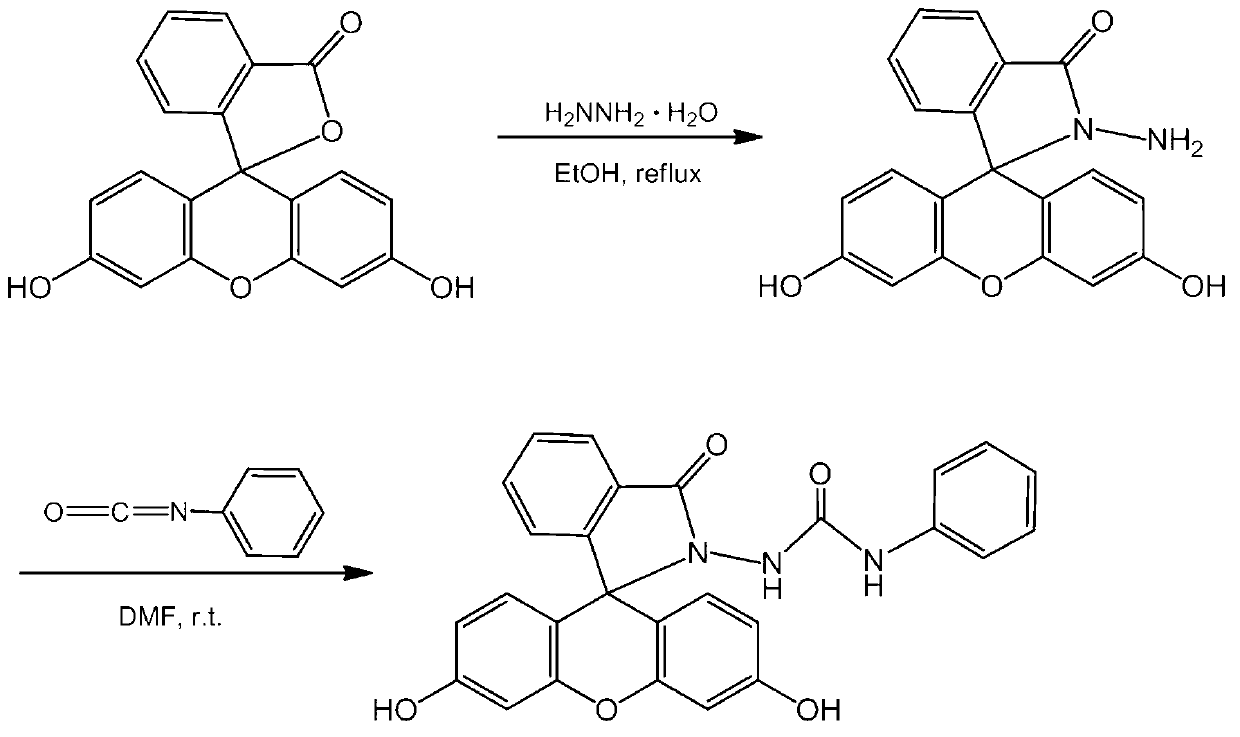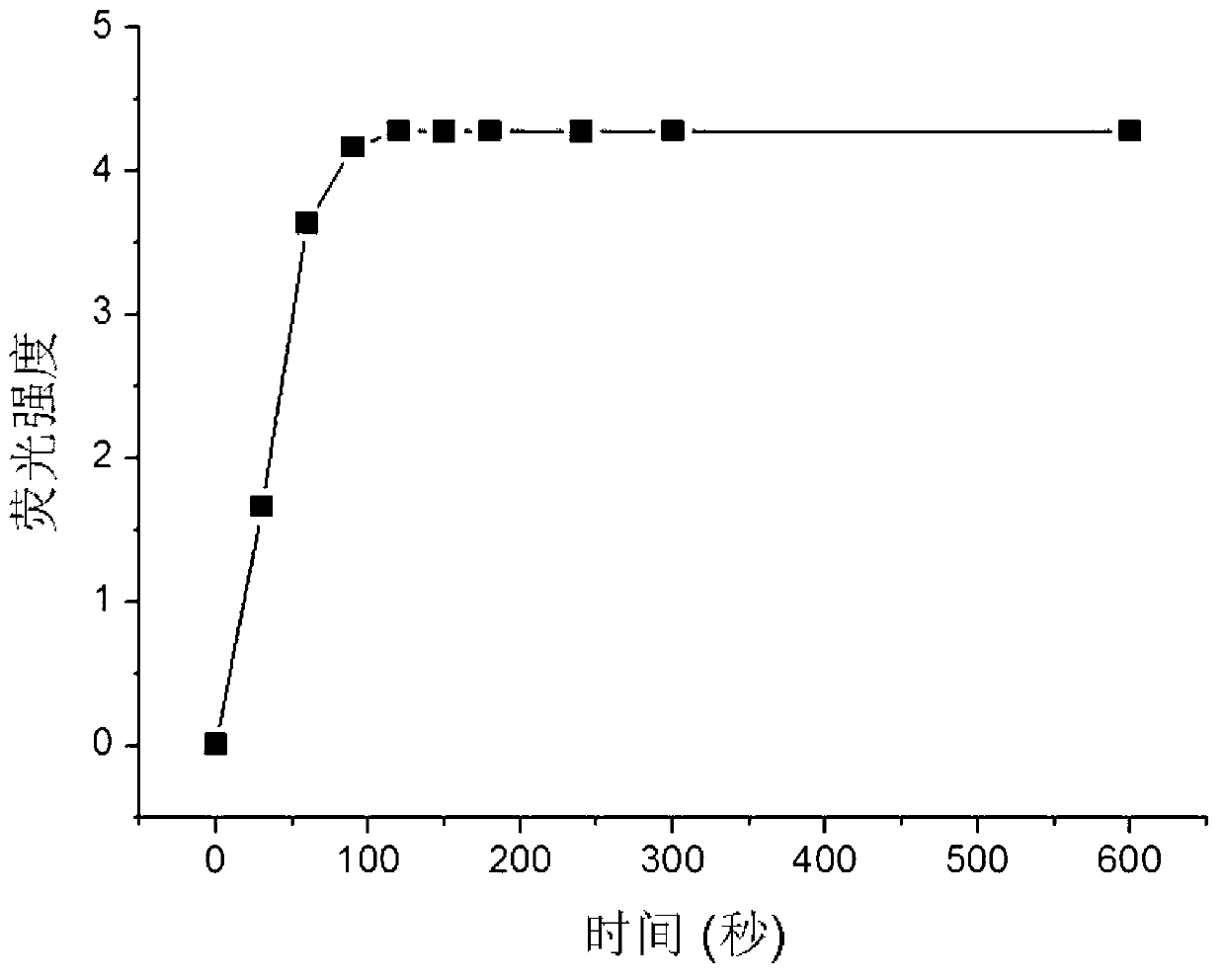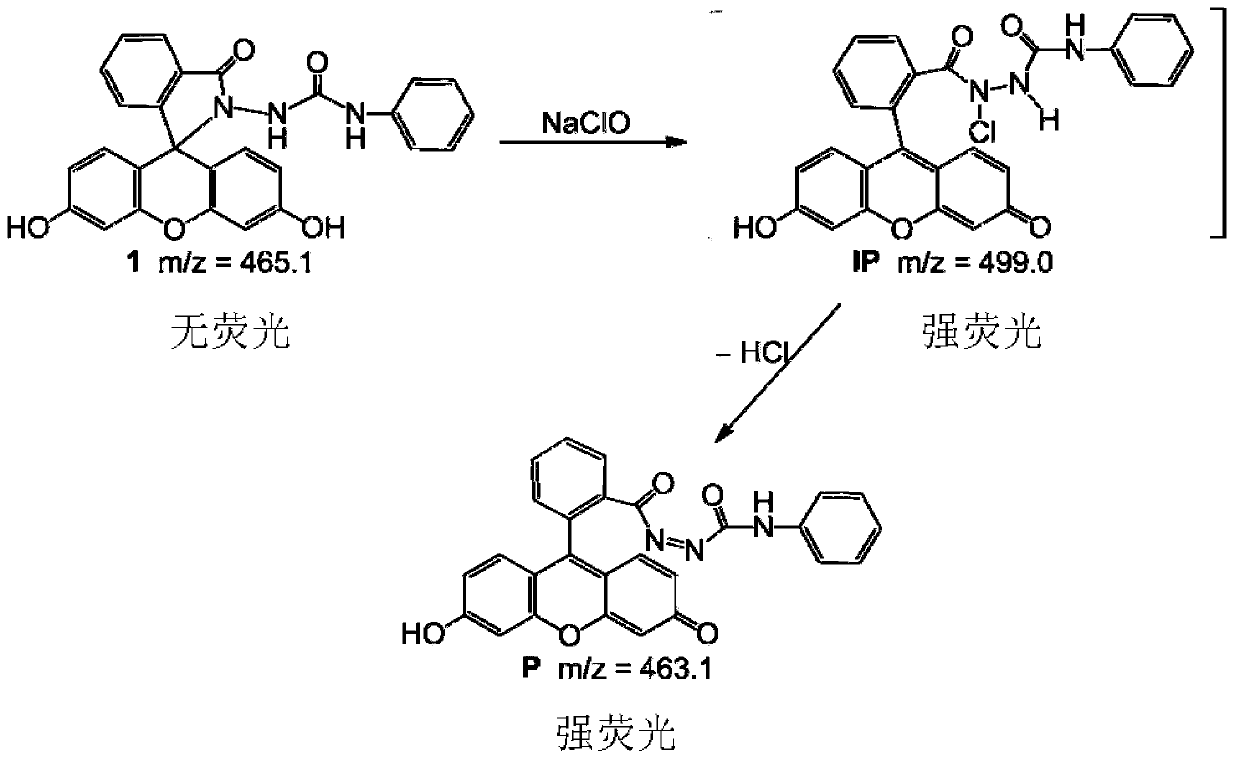Fluorescent probe for detecting hypochlorite aions, and preparation method thereof
A technology for detecting hypochlorous acid and fluorescent probes, applied in fluorescence/phosphorescence, chemical instruments and methods, luminescent materials, etc., to achieve the effects of high selectivity, good water solubility, and fast reaction time
- Summary
- Abstract
- Description
- Claims
- Application Information
AI Technical Summary
Problems solved by technology
Method used
Image
Examples
Embodiment 1
[0024] The synthetic route of fluorescent probe is as follows: figure 1 shown.
[0025] Fluorescein hydrazide was refluxed with fluorescein (1g) and excess hydrazine hydrate (3ml) in 30ml of ethanol for 5 hours. After the ethanol was removed by rotary evaporation, the product was washed with distilled water, and 900mg of the product was obtained by suction filtration, with a yield of 86.5%. ESI-MS(M+H) + :m / zcalcd 347.1; found 347.0.
[0026] The synthesis steps of fluorescent probe 1 with the structure shown in formula I are as follows: fluorescein hydrazide (346 mg) and phenyl isocyanate (0.3 mL) were dissolved in 5 mL of dry N, N-dimethylformamide, and stirred overnight at room temperature for reaction. Then, 20 mL of distilled water was added to the above solution, and extracted three times with 20 mL of dichloromethane, the separated organic phase was washed with distilled water and dried over anhydrous sodium sulfate, and then the dichloromethane was removed with a rot...
Embodiment 2
[0029] The selectivity of the fluorescent probe shown in formula I to the fluorescence detection of hypochlorite.
[0030] The 10mM PBS buffer solution with pH=7.4 was used to control the experimental conditions to meet the physiological environmental conditions.
[0031] Add 0.1ml of fluorescent probe 1 ethanol solution (1mM), 8.0ml of PBS buffer solution, 0.3ml of the analyte (in which the concentration of freshly prepared sodium hypochlorite is 1mM, and the concentration of the rest of the analyte Both are 10mM), and dilute to 10ml with PBS buffer solution. After constant volume, the concentration of the probe is 10M, the concentration of hypochlorite is 30M, and the other analytes are all 300M. Shake well, and after equilibrating for 3 minutes, transfer 3ml of the working solution to a 1cm fluorescent dish to measure the fluorescence spectrum. The excitation and emission wavelengths are 480nm and 525nm, respectively. In the blank experiment, no analyte was added to the a...
Embodiment 3
[0033] Quantitative fluorescent detection of hypochlorite by fluorescent probe shown in formula I.
[0034]Add 0.1ml of fluorescent probe 1 ethanol solution (1mM), 8.0ml of PBS buffer solution, 0-1.0ml of 1mM sodium hypochlorite solution in different volumes to a series of 10ml colorimetric tubes, and dilute to 10ml with PBS buffer solution. After constant volume, the concentration of the probe is 10M, and the concentration of hypochlorite is 0-100M. Shake well, and after equilibrating for 3 minutes, transfer 3ml of the working solution to a 1cm fluorescent dish to read and record the fluorescence intensity at 525nm. The fluorescence intensity and the corresponding hypochlorite concentration data were input into the software Origin8 for fitting, and a linear working curve was obtained in the range of sodium hypochlorite concentration of 0.67-1.8M, and the linear regression constant was 0.9964, indicating that the probe can quantitatively detect the concentration of hypochlorit...
PUM
 Login to View More
Login to View More Abstract
Description
Claims
Application Information
 Login to View More
Login to View More - Generate Ideas
- Intellectual Property
- Life Sciences
- Materials
- Tech Scout
- Unparalleled Data Quality
- Higher Quality Content
- 60% Fewer Hallucinations
Browse by: Latest US Patents, China's latest patents, Technical Efficacy Thesaurus, Application Domain, Technology Topic, Popular Technical Reports.
© 2025 PatSnap. All rights reserved.Legal|Privacy policy|Modern Slavery Act Transparency Statement|Sitemap|About US| Contact US: help@patsnap.com



